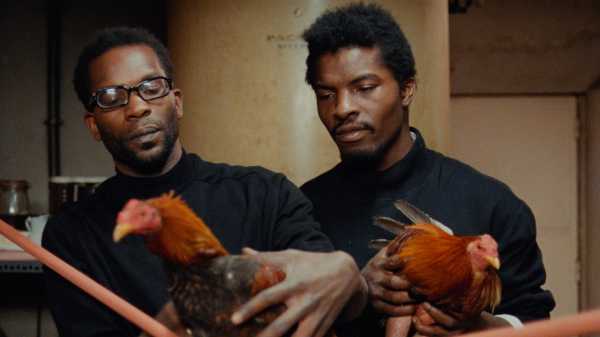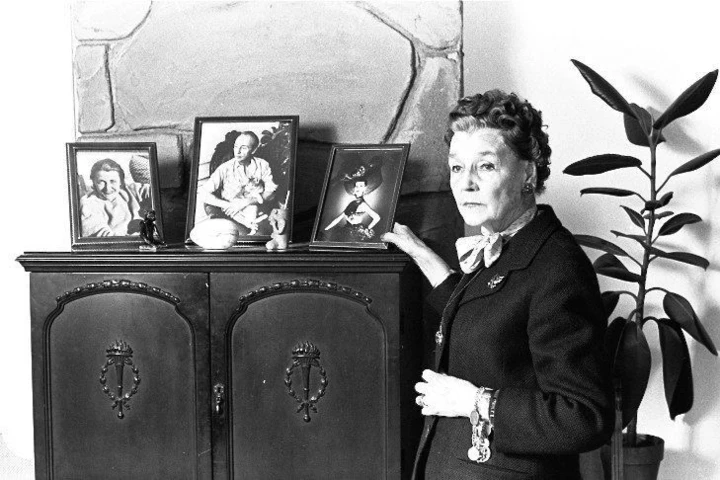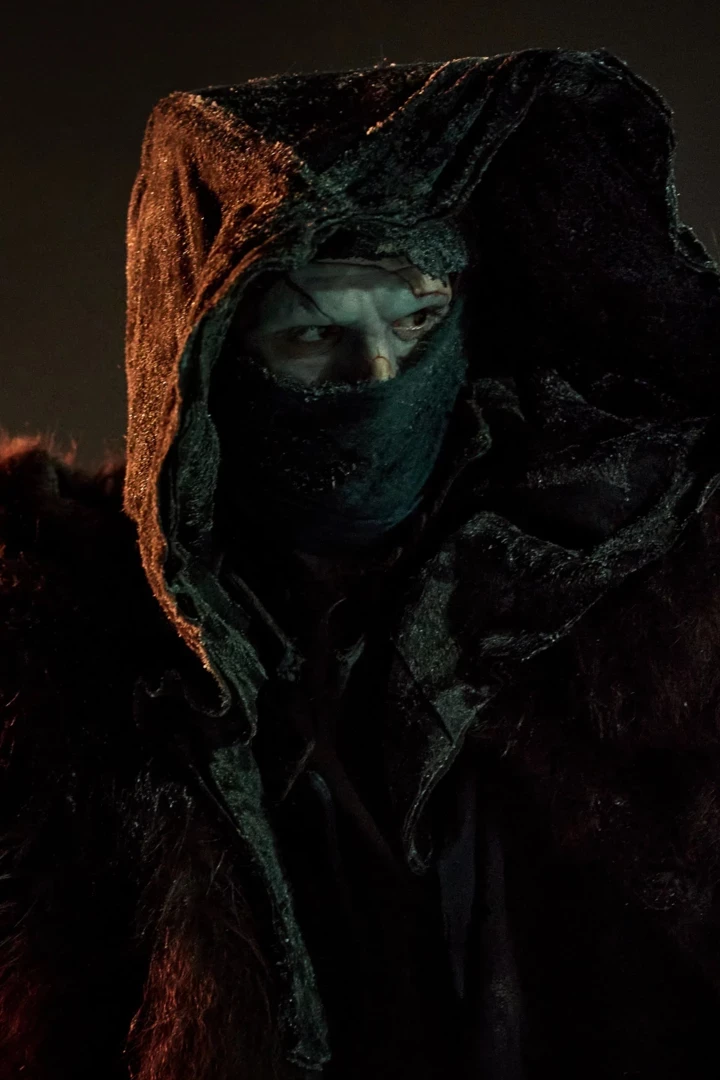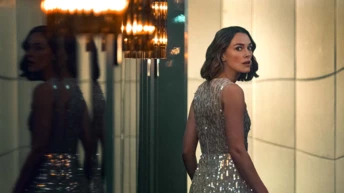
Save this storySave this storySave this storySave this story
A handheld camera doesn’t necessarily make a fiction film documentary-like, and neither does a story about the hidden underside of daily life. Claire Denis’s second fiction feature, “No Fear, No Die,” from 1990 (which is currently playing at BAM in a new restoration) has both elements, but these are not what gives it the authority of a factual account. That authority comes, rather, from the way the film catches not only its characters’ dramatic actions but also the fine details of their activities. Those details do more than elucidate the characters’ big decisions; they anchor the story in a time and a place, imparting an intellectual underpinning to the story that unfolds. The events that make up the action of “No Fear, No Die” are more than merely well imagined and plausible; they seem to have been excerpted from a fully realized world.
For starters, the action implicates a far wider geographical and political spectrum than it depicts. The protagonist, Dah (Isaach De Bankolé), is from Benin, and the movie—punctuated by his reflective voice-over—is largely dramatized from his point of view. He and his business partner, Jocelyn (Alex Descas), who’s from the French Antilles, arrive in Paris to keep an appointment with a shady gray-haired businessman-slash-gangster named Pierre Ardennes (Jean-Claude Brialy). Dah and Jocelyn are in the cockfighting racket, which is illegal; Jocelyn is an expert handler of fighting birds, and Dah runs the business side. Most of the action takes place in a truck-stop complex owned by Ardennes, alongside a highway in the suburbs of Paris. There’s a restaurant, Chez Toni, which is managed by his romantic partner, Toni (Solveig Dommartin); a disco that’s run by his son Michel (Christopher Buchholz); and an extensive warren of back rooms and basement spaces. In one of the secluded areas, Ardennes is opening a clandestine cockfighting pit and gambling outfit, and he hires Jocelyn and Dah to supply the house with battling livestock.
Dah drives a hard bargain with Ardennes, but in return for their cut of the take he and Jocelyn are practically indentured—installed with their birds in a windowless room underneath the restaurant’s kitchen. The pair’s plan is simple—to make some money and get away. But the deal with Ardennes introduces a pair of twists that complicate things. First, Ardennes, who used to live in Martinique, was Jocelyn’s mother’s lover and insistently reminds Jocelyn of this fact; he knew Jocelyn as a child and plays on their longtime bond, and Jocelyn takes this unwanted connection as a sort of family insult, a dishonor, a subjection. (There’s no hint of actual blood relation, though Ardennes jokes about the near-miss.) Second, Dah and Jocelyn are Black; Ardennes is white, and, while he never utters a racist word or makes any demeaning remark, the power relationship between the boss and his contractors is unambiguous and inherently racialized.
There’s a moment early on in which Denis presents the vector of white power with a coup de cinéma that unites the fundamental forces of acting, dialogue, and image in a fleeting moment that’s nearly an emotional explosion. Ardennes gives his new associates the grand tour of his compound, showing them the disco (complete with light show), the fight pit (a work in progress), and the restaurant (where he embarrasses Toni with his aggressive caresses), and then takes them into the kitchen. Glib and patronizing, he boasts of his generosity toward the cook, François (François Oloa Biloa), who’s also a Black man, and playfully jabs François with a between-men tap on the jaw. As Ardennes turns his back, the exchange of silent glances between François, his dependent grin frozen on his face like a mask, and the two newcomers resounds silently with the force of a hammer blow. (Denis has said that the film’s view of race relations was inspired by the writings of Frantz Fanon.)
The original French title of the movie is “S’En Fout la Mort” (a bit of broken French, meaning something like “Doesn’t Give a Fuck About Death”), which is the name that Jocelyn gives to his best fighting cock, and Denis, far from treating the birds as the mere engines of the story, devotes significant time and attention to Jocelyn’s care and handling of them. Descas displays extraordinary dexterity and expertise in the medication of the birds (pinching their beaks open); in giving them some precise roughhousing exercise, as if they were boxers (transferring them from hand to hand, bounding them on a loosely strung tightrope); in trimming and fluffing their feathers; in tying the fighting spurs to their feet with a touch of candle wax. Before the shoot, he and Denis went to Martinique, where he actually became the employee of a cockfighting trainer, who taught him the profession. His extensive study is matched by Denis’s own firsthand experience of the latent drama that attends the behind-the-scenes preparations and their connection to the decisive, high-stakes battles in the pit. (The end credits affirm that no animal was harmed in the making of the movie.)
Denis is equally fascinated by the details of underworld business that form the economic and social context of cockfighting, starting with the very tone of command and aura of power that Ardennes sustains. As played by Brialy, one of the emblematic actors of the French New Wave—he had major roles in films by Claude Chabrol, Jean-Luc Godard, Jacques Rivette, François Truffaut, and Éric Rohmer, all of whom he had known in their pre-directorial film-critic days—Ardennes himself is both entirely natural and entirely theatrical, a wielder of power whose career also depends on sustaining the showmanship of power. His voluble vanity comes off as a form of calculation so deeply ingrained that it has taken over his character; his hard-nosed breeziness incarnates an understated fury.
Living in Ardennes’s compound, Dah and Jocelyn are always in his force field, and perpetually wary. They experience this relentless pressure as an ambient and intimate colonial exploitation that, for Jocelyn, is doubled by a kind of sexual humiliation, via the faux filial bond. (De Bankolé and Descas brilliantly embody the characters’ tension in performances of physical eloquence, conveying as much with their glances, their gestures, their gait as with their dialogue.) The result is that the partners’ professional focus is jangled. Jocelyn, slipping into a state of agitated anomie, has trouble running the fights satisfactorily, giving rise to a gangland conflict of deadly menace.
Dah, witnessing Jocelyn’s gradual emotional and moral disintegration, resorts to increasingly desperate measures to hold up their end of the deal. The powerful, tragic drama that results coalesces very gradually—from a swarm of impassioned observations conveyed both in the script, by Denis and Jean-Pol Fargeau, and in the handheld camerawork of Agnès Godard (whose decades-long collaboration with Denis began in 1988). Godard’s camera has a formidable agility that’s at once perceptive and analytical, moving at the speed of sight and thought together. The film is Denis’s first masterwork, and it set the tone for her best work to come. In the course of her wide-ranging career, one of the most illustrious in the current cinema, Denis’s concern for social critique has sometimes overwhelmed curiosity, and her control of tone and effect sometimes inhibits spontaneity. In “No Fear, No Die,” her copious and nuanced observations, her aesthetic sensibility, and her analytical world view are unified. She films as if she is a part of the world she films, as do the best modern documentarians; her fiction, here, conveys a sense of immediate experience, a feeling of freedom. ♦
Sourse: newyorker.com







